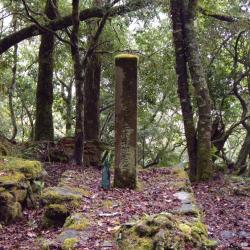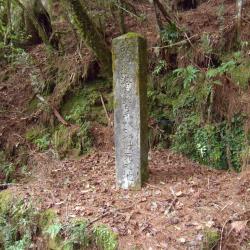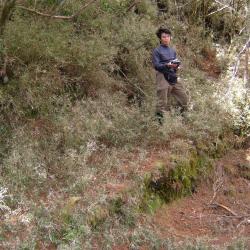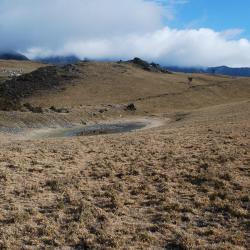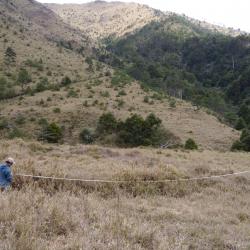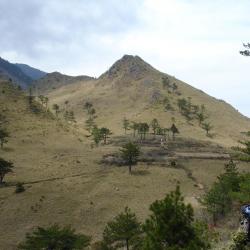The Monument of the Death of Sergeant Niki Sanjuro of Karenkou Prefecture is located on the side of the ridge valley by the Batongguan Traversing Historic Trail, about 1,770 meters above sea level, on the south side of the first Eshira railway bridge, which is about 10 minutes away from Eshira Police Post.
Originally, there were two pillars erected, one was to commemorate the death of Sergeant Niki and the other for Police Officer Lai Minghe, who were killed by gun ambush in the dense forest on October 23, 1920. They were on duty supervising the second phase of the construction of Batongguan Traversing Historic Trail. Later, it was converted into one reinforced concrete obelisk-shaped monument in the mid-Japanese occupation in the 1930s, but the inscription only bears the name of Niki Sanjuro.
